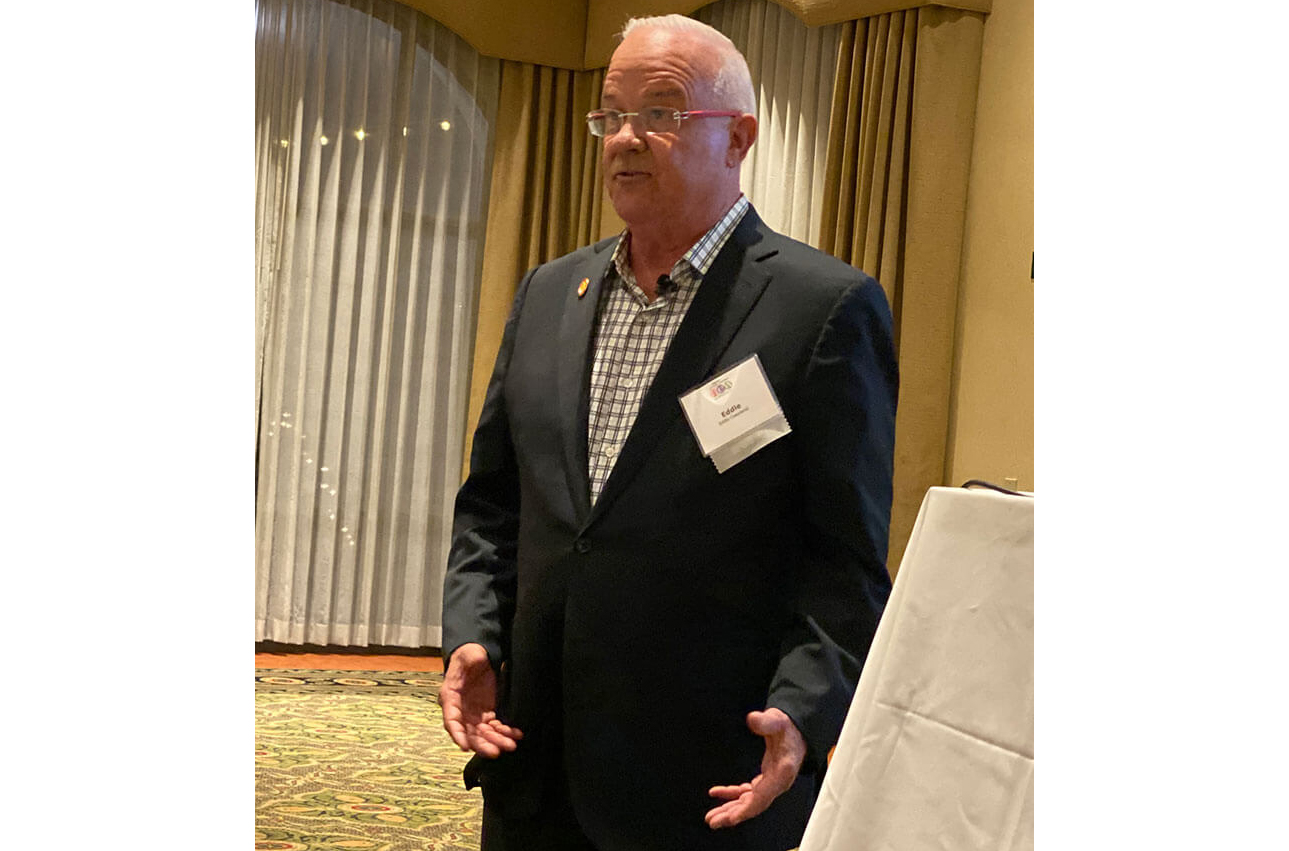Editor’s note: Members of the Southern California chapter of the Network of Executive Women (NEW) got a wine appreciation lesson from Eddie Osterland, master sommelier. Osterland, author of the book “Power Entertaining,” spoke at the NEW event, held Nov. 7 at The Clubhouse at Anaheim Hills. Here is part one of Osterland’s presentation.
In 1973, Eddie Osterland became the first master sommelier in the United States. There are fewer than 250 master sommeliers in the U.S. and fewer than 500 in the world.
A New Jersey native, Osterland earned a college degree in psychology. After deciding he wasn’t ready to jump into the business world, he and a friend moved to Hawaii for the summer. He decided to go to graduate school there, majoring in psychopharmacology. At night, he worked as a waiter at one of the elite hotels in Honolulu, in its French restaurant.
“Everything is going well until one night the maître d comes walking through the dining room at about five minutes to six, before the restaurant opened up, and he’s got this chain with a cup and key that the French sommelier wore—Pierre. And he goes, ‘Eddie, Pierre called in sick.’ And he hangs this thing around my neck. He said, ‘You’ve gotta help me out.’ I said, ‘Don’t do that. I can’t. I won’t.’ The guy says, ‘You want to keep your job?’ ‘Well, yeah.’ He goes, ‘Here’s the rules. Red and white—you serve red with the meat. White wine, it goes with fish. And anybody on the fence, go deep—hit them with a rosé,’” Osterland said.
He faked his way through that shift, knowing absolutely nothing about wines, but was impressed with how much money he had made in tips. He began to wonder how well he could do if he really knew what he was talking about.
“I changed my whole life really quickly,” he said. “I did some research. I found out that the only school in the world that taught professional wine tasting and then a degree was the University of Bordeaux. So, I moved to Bordeaux to take this class.”
Upon arriving, he discovered the class was taught solely in French, so he spent nine months in France learning the language. He returned to the University of Bordeaux and earned his DUAD—Diplome d’Université d’aptitude a la dégustation du vins. At the time, the master sommelier diploma exam was only offered in London, so he flew to London, took the exam and passed it on the first try. Only seven of the 150 people who had ever taken the exam had passed it on the first try, Osterland said.
“I haven’t looked back since,” he said.
Osterland told his audience he has worked with companies that were trying to attract new clients or cement key relationships.
“You know people like to hang out with celebrities,” he said. “People like to hang out with pro athletes because they feel like something maybe rubs off. People also like to hang out with people who do food and wine well.”
He said when entertaining it is important to create an experience, and it’s usually the sommelier that is in charge of creating that experience for you.
“You need to think like a sommelier, or you need to teach your people coming in and buying to think and entertain like a sommelier,” he said. “Teach them how to create an experience rather than a refueling…It has to have takeaway value.”
Come hungry
Food tastes better when you are hungry, but people don’t like being hungry, Osterland said.
He said put your best out there first. Every tasting he participated in while at Bordeaux was done at 11:30 a.m. and was over at noon. That’s because people are at their sharpest as far as their palate is concerned earlier in the day, he said.
“So, rule No. 1…serve the best first,” he said, adding that he tells his guests he invites over for a weekend lunch to come hungry.
“Then I’m going to humble them with something great. I call it starve them and stab them,” he said. “It just makes so much sense if you’ve got a budgetary concern. Spend the money on those first 15 minutes. This is where you bring out the foie gras, the caviar, etc. And caviar these days is really fun…Caviar is now farmed in 40 different places. It literally retails as little as a dollar a gram.”
Osterland said the idea is to serve people the best up front and you can’t lose. “Even if you burn it, they are going to love it because they are starving,” he said. “If you do a good job, you are going to own them.”
He said he always serves wine before food because he doesn’t want the wine to be an afterthought. And he always serves two wines so his guests will have something to compare them to.
“In Bordeaux, all of our trainings were done with side-by-side comparisons,” he said.
For example, serve two pinot noirs—one from Oregon, one from California. Ask which one is from Oregon. If they don’t know, help them out.
“You say, ‘Well, Oregon’s in the north—30 degrees north of California. It’s colder. The grapes don’t get as ripe. They are lower in alcohol. California is warm, so the grapes get bright, jammy.”
When they taste the wines side by side, they can determine the difference.
“You taught them that,” Osterland said. “I promise you, within 60 days, the people you do that event with, that theme, are going to repeat that to their friends because you showed them how to do it. And that’s power entertaining. That’s giving people takeaway value to your event.”
[envira-gallery id=”131581″]
